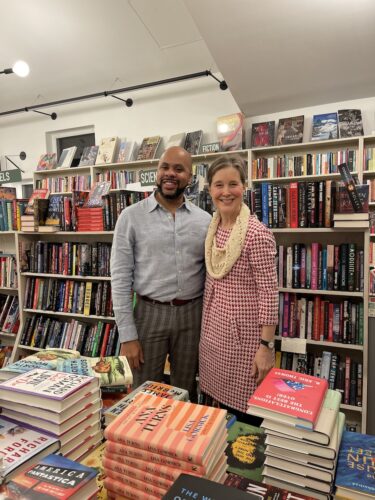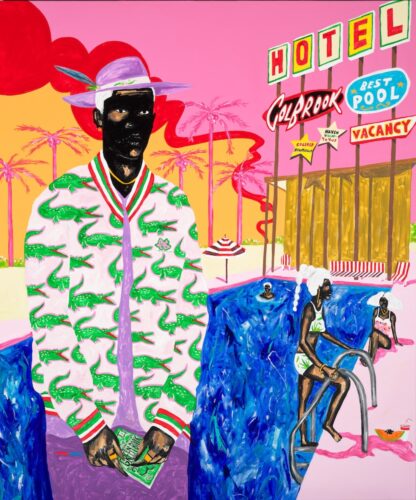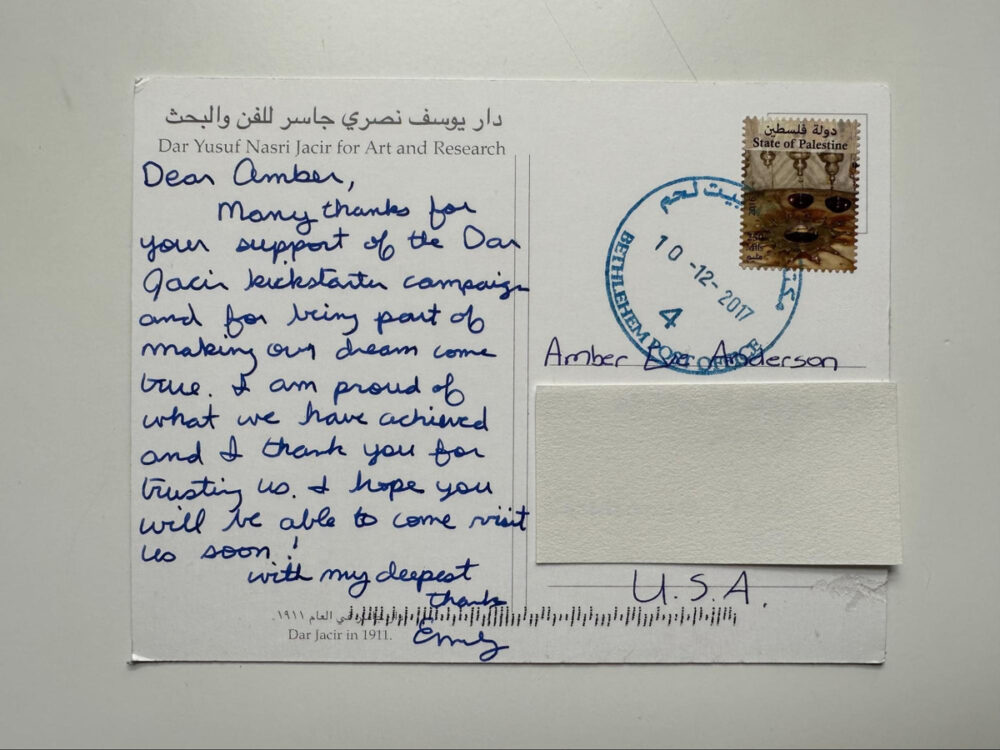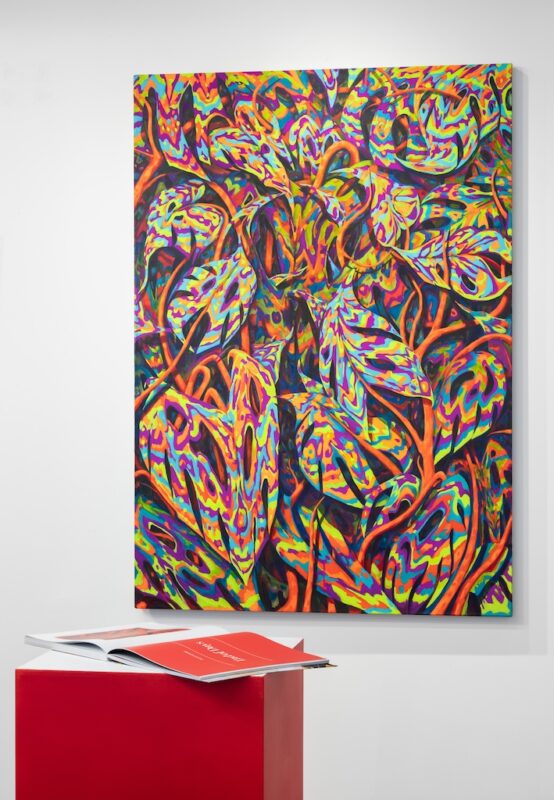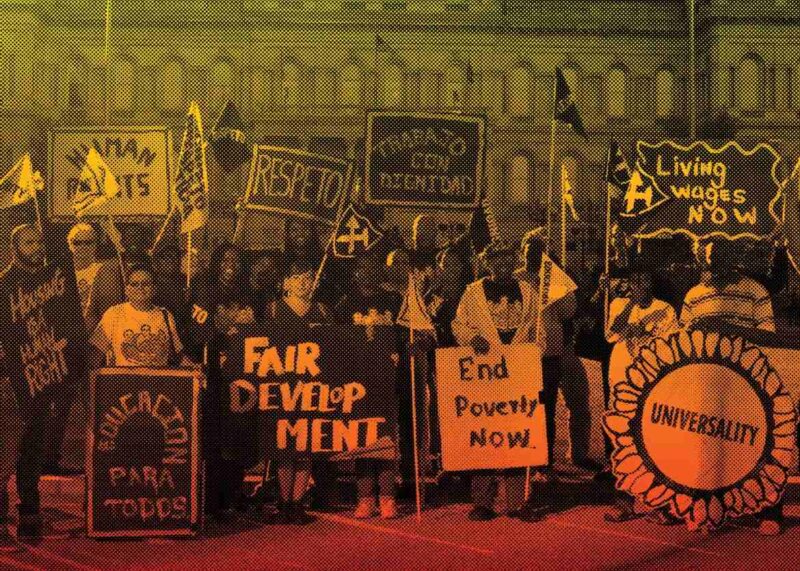I’ve received occasional updates from Dar Jacir since its founding. In January 2018 there were confrontations outside of Dar Jacir in response to Trump declaring Jerusalem the capital of Israel in December 2017. The newsletter showed images of excessive tear gas, images which can also be seen in Jacir’s 2019 film letter to a friend, which is presented in the form of a letter written on April 11, 2019.
“Dear Eyal,” Jacir reads as she films her bare feet walking across stones, slowly counting her steps. “I hope this letter finds you well. Thus far, things are calm on our street, but I am not sure how long that’s going to last given the recent Israeli aggressions.” Jacir is asking Eyal to investigate a future incident at her family home in Bethlehem, using the film as a means to gather information for future legal proceedings.
Jacir goes on to state that a study by UC Berkeley Law found that her neighborhood is the most tear gassed place on earth, which comes to life at the beginning of the film when she shows some of the thousands of tear gas canisters found in her garden in Bethlehem.
letter to a friend doesn’t use as much visual zooming in and out as 15 Palestinian Minutes in Palestine, but instead zooms in and out from Jacir’s personal observations from inside Dar Jacir to footage from international journalists that depict Dar Jacir from the street; from her family history to the larger historical context of Dar Jacir in the moment in which the film was made.
She shows maps depicting the location of nearby refugee camps using the location of Dar Jacir along the historic Jerusalem-Hebron road and Rachel’s tomb as reference points—the latter a site revered by both Jewish and Muslim women for its association with fertility. Beginning in 2002, Israel began constructing a 25-foot wall that zigzags incomprehensibly through Bethlehem, creating a maze out of Jacir’s neighborhood.
“The wall does not separate us from Israel, but rather separates us from ourselves, from each other. It is in the very heart of our neighborhood,” she says in her letter in the film. “There are so many different maps to send you, but somehow it never seems like they can capture the reality of the situation on the ground.”
About halfway through the film, she refers to filming every inch of her family house and every street of Bethlehem in 1999; twenty years transpired between 15 Palestinian Minutes in Palestine and this film, and she is still trying to capture what she fears she will lose. Jacir says that there are 18 illegal Israeli settlements encircling Bethlehem with over 100,000 settlers living in them in violation of international law as stipulated by the Fourth Geneva convention.
There is a montage of videos of these settlements with the moon shining over them, the footage shaky and out of focus, while Jacir’s words are clear and methodical, speaking matter-of-factly to the threat of disappearance. She shows us the incongruity of the everyday and the unimaginable as she walks her dog along the graffitied wall, as her friends are shot by snipers, as vineyards are destroyed, as young newlyweds celebrate at Jacir Palace, “a hotel jammed with pilgrims who have come to see the Holy Land.” Lit up at night “like Las Vegas,” the celebration is shown upside down, as if it can’t quite be viewed in the same way as daily life.
letter to a friend ends with Jacir counting her footsteps as she walks toward the wall. “I hope this is enough information for now for you to begin the investigation, before our house is occupied by settlers. Please send me a list of the kind of information and documentation I should start collecting before they come,” she says, passing the supermarket around footstep 100 and ending with the towering wall in view.
In May 2018, I received an update from Dar Jacir that they had planted trees in their garden, another part of their initial Kickstarter campaign rewards. In June 2019, they had their inaugural exhibition. In May 2021, Israeli forces broke into and raided Dar Jacir. Their offices were ransacked, their phones, computers, and cameras taken. Earlier that week, the urban farm had been burnt to the ground. Then, on December 6 of this year, Dar Jacir posted pictures on Instagram of their team and volunteers cleaning one of their terraces and planting some crops, a continuation of their work caring for and preserving their ancestral land.
Three Films by Emily Jacir was streaming on Alchemy Film & Arts’ website from November 7-16, 2023.
You can view the Dar Jacir Kickstarter campaign here.
